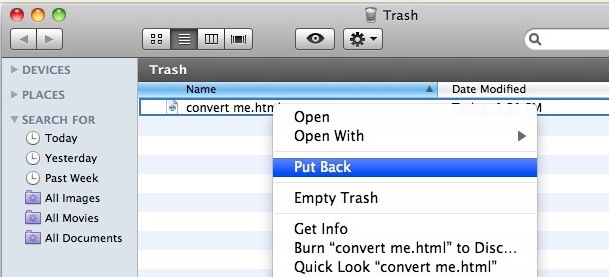How to Recover Lost Files on Mac is Pretty Straightforward
The most widely used and relatively pain-free method in data recovery for Mac, is the use of data recovery software. These software can recover all sorts of deleted files such as document files (.doc and .docx), image files (.jpeg, .png, etc.), PowerPoint files (.ppt), and numerous others.
By now, most if not every Mac user, are aware that deleted files can be undeleted from the Trash Can and also by using the Time Machine app. However, there are numerous data recovery software for Mac computers. In terms of software, how to recover lost files on Mac is pretty straightforward. Let us have a look at the usual process for undeleted Mac files:
• Download the chosen data recovery software. Please note that there are freeware such as FreeUndeleteMac, but most data recovery software come with a price tag. Some popular ones are uFlysoft Data Recovery, Mac Data Recovery, R-Studio for Mac.
• Have a separate disk, flash drive, or other storage device on which to copy the recovered or undeleted Mac files.
• Since there are different scan levels, perform either a quick scan to recover data/files that have been deleted recently or a full salvage/deep scan for drives that have been deleted or erased.
• The software will then scan to locate the file being sought. Once the scanning phase is completed, the recovery process will begin. The recovery phase can be the most time consuming and can last from a few minutes to a few days depending on the number of files being recovered, the size of the drive, among other factors.
• The recovered files will be displayed according to the file type of each file. For example, all image files will be grouped together, document files will be grouped together, and so on.
• It is very likely that the original file names will be lost. Some data recovery software are able to recreate file names. The software does this by scanning the files and giving them a name based on data extracted from the content.
• Most data recovery software preserve metadata contained within individual files. This is great news for files with suffices such as .mov as well as any music and video files. The preservation of the metadata means that the recovered files can be imported into iTunes or iPhoto, for example, and iTunes and iPhoto will readily recognize them and add them to your library with the correct information.
• Some data recovery software will re-index text/document files which allows a text search to be done to locate an exact file.
Knowing how to recover lost files on Mac can certainly get you out of a sticky situation in terms of being able to place your hands on undeleted Mac files when needed. However, the task can be very time consuming so it cannot be stressed enough that backing-up your data on a regular basis is very important. Therefore, endeavor to frequently back-up your data/files in cloud storage, external storage devices, or whatever other method you choose.

